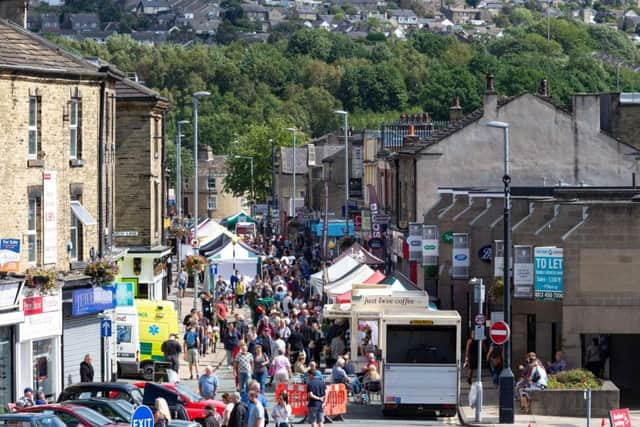David Behrens: We won't save the high street by making it harder to get to
And, of course, their effect is plain to see. Buying at 10 per cent below retail from the comfort of one’s sofa, with no need to negotiate the pay-and-display car parks and other obstacles placed in our way by local authorities, is an attractive proposition for any shopper.
But Amazon is, for better or worse, here to stay. We have known this for a decade and a half now, and yet a cohesive, nationwide strategy to make it easier to patronise those of its high street rivals that remain in business, seems to have eluded us.
If anything, we are moving in the other direction.


Advertisement
Hide AdAdvertisement
Hide AdHuddersfield is a case in point. The council there, concerned that shoppers in cars were getting in the way of those on buses, has been fining drivers who go through “bus gates” in the town centre. There are not physical gates but CCTV cameras that record number plates and trigger fixed penalties of up to £60. The council has pocketed nearly £1.5m in the last year and a half.
It says that traffic congestion in the area has had “a negative impact on bus punctuality”, but its misguided solution typifies the small-minded thinking that pervades our town halls.
Advertisement
Hide AdAdvertisement
Hide AdInstead of improving the town centre experience, it has literally driven people away. A trader who obtained the figures under a Freedom of Information request this week said the 49,000 tickets had nearly halved the footfall on some streets.
What chance is there for our high streets if their future is entrusted to officialdom like this?
And why prioritise buses in the first place? The solution to our disjointed public transport system is to make it better, not punish those who don’t want to use it.
Advertisement
Hide AdAdvertisement
Hide AdThere are already signs of rebellion. The RAC reported last month that one in three motorists are more reliant on their cars than they were the year before. Car dependency, it said, had been falling for the previous six years but the rising dissatisfaction with buses and trains had not only reversed the trend but sent it to a new high.
One in four drivers explicitly blamed public transport for their decision to return to their cars, with reliability, rising fares and service cuts the problems most cited.
This should not have been a surprise. The number of local bus journeys in England fell by 70m last year, and, as we all know, punctuality on the rails is at a 12-year low. And the fares are going up again in January.
Yet the impediments to visiting some of our most important high streets continue to multiply. Leeds confirmed this week that it will install 140 sets of number plate recognition cameras to enforce the “clean air charging zone” that will come into force in 2020. This was demanded by the EU, to which we will by then no longer be answerable.
Advertisement
Hide AdAdvertisement
Hide AdNo-one is denying that public health is important, but so are the town and city high streets that are the heartbeat of their communities. It ought to be made as easy as possible to use them, free from the fear of being picked out and fined if we put a foot wrong.
Many such streets are already beyond rescue by traffic policies alone. Blighted by abandoned shops that will never be filled, they require more radical surgery .
This, as I have suggested before, might involve the kind of lateral thinking that tends to elude councils grasping at off-the-peg solutions: a connecting of the dots between the surfeit of shops and the shortage of houses.
A programme of incentives, enforced by Whitehall, to rebalance the ratio of retail and residential properties, to reinvent disused buildings as desirable places in which to live, would not only breathe new life into countless decaying high streets but also ease the threat of building that currently hangs over so much of our green belt.
Advertisement
Hide AdAdvertisement
Hide AdWe are all – local authorities and individuals – invested in our high streets. The prosperity of our town centres underpins the value of our homes and creates a hedge against the creeping subsidence that undermines the foundations – which is what the growth of online shopping represents.
Looked at that way, those 10 per cent savings don’t seem such a good deal, do they?